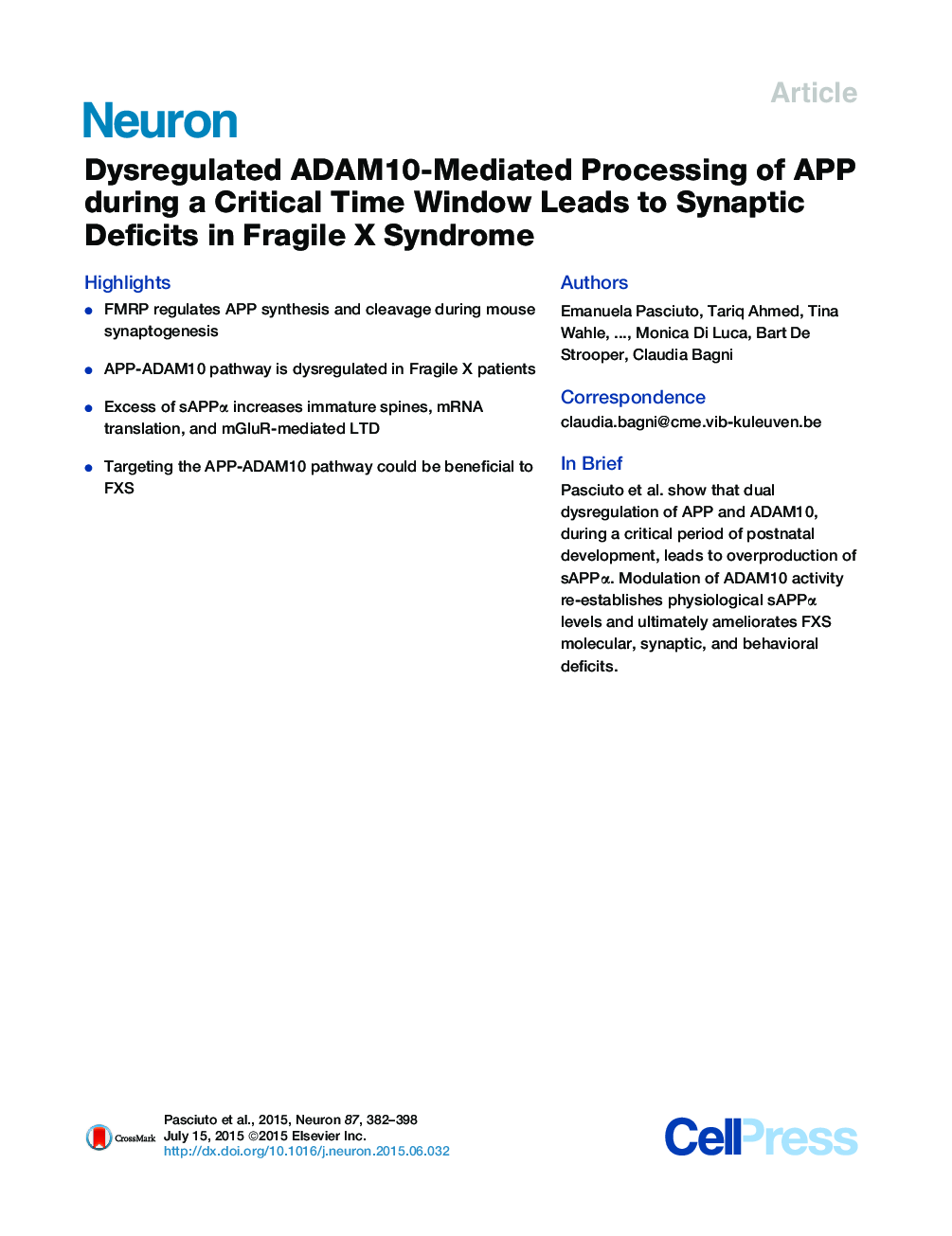| Article ID | Journal | Published Year | Pages | File Type |
|---|---|---|---|---|
| 4320913 | Neuron | 2015 | 17 Pages |
•FMRP regulates APP synthesis and cleavage during mouse synaptogenesis•APP-ADAM10 pathway is dysregulated in Fragile X patients•Excess of sAPPα increases immature spines, mRNA translation, and mGluR-mediated LTD•Targeting the APP-ADAM10 pathway could be beneficial to FXS
SummaryThe Fragile X mental retardation protein (FMRP) regulates neuronal RNA metabolism, and its absence or mutations leads to the Fragile X syndrome (FXS). The β-amyloid precursor protein (APP) is involved in Alzheimer’s disease, plays a role in synapse formation, and is upregulated in intellectual disabilities. Here, we show that during mouse synaptogenesis and in human FXS fibroblasts, a dual dysregulation of APP and the α-secretase ADAM10 leads to the production of an excess of soluble APPα (sAPPα). In FXS, sAPPα signals through the metabotropic receptor that, activating the MAP kinase pathway, leads to synaptic and behavioral deficits. Modulation of ADAM10 activity in FXS reduces sAPPα levels, restoring translational control, synaptic morphology, and behavioral plasticity. Thus, proper control of ADAM10-mediated APP processing during a specific developmental postnatal stage is crucial for healthy spine formation and function(s). Downregulation of ADAM10 activity at synapses may be an effective strategy for ameliorating FXS phenotypes.
